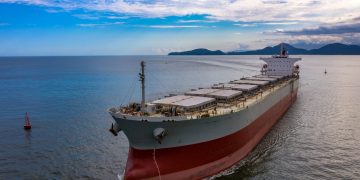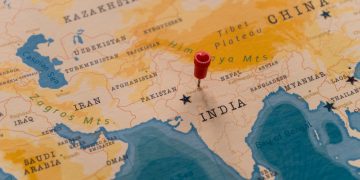With the official starting date for the global sulphur cap 2020 only a few months away, ship owners and technical managers are still left with a number of issues to resolve. While many owners have decided to install scrubbers already at this stage, the majority opted to switch from HFO to compliant fuels. Some see this as a permanent solution, others just want the current shortage of docking spaces at repair shipyards and the long lead times for scrubbers to pass.
However, “compliant fuel” is not as simple a topic as it may appear. For one thing, making this change requires the tanks to be thoroughly cleaned to avoid the compliant fuel being contaminated with HFO residues – an expensive proposition. The cleaning procedure usually requires substantial manual labor and produces tons of hazardous slops to be disposed of. Another solution consists of using “additives” that are said to slowly dissolve residues over a period of several months, a method that may or may not work. In any case, there will be no easy way back after the ban to carry HFO onboard enters into force on 1 March 2020.
There are plenty of different types of compliant fuels. MGO is the best known and most reliable option, but comes with a hefty price tag. Studies predict prices will increase in early 2020 due to higher demand.
Many refineries have announced they are developing new very low sulphur fuel oils (VLSFO, < 0.5% S) and ultra-low sulphur fuel oils (ULSFO, < 0.1% S). However, the price and availability of these new products are unclear, especially in smaller ports with a limited bunkering infrastructure. The new fuels are mostly blends that have to comply with basic standards such as IMO MARPOL Annex VI (regulation 18.3) or ISO 8217. But questions persist regarding key parameters such as viscosity, lubrication properties, flash point etc. Unfortunately, the established fuel stability tests (such as ASTM D 4740) cannot be depended on where the new fuel blends are concerned since on occasion, they will produce false or misleading results.
There will be no easy way back after the ban to carry HFO onboard enters into force on 1 March 2020.
As a way of avoiding stability issues, crews have always sought to keep the different HFO bunkers separate from one another to prevent the fuels from co-mingling. With the various types of new low sulphur fuel oils, this is no longer an option, it is a requirement: Since they are based on aromatics or paraffins and must mandatorily be kept apart.
Due to the chemical processes used to produce VLSFO and ULSFO, the carbon footprint of these fuels is much higher than that of HFO. What is more, they contain a higher ratio of so called cat fines, or aluminum oxide solid particles. These particles may increase the abrasive wear of piston rings and cylinder liners. Furthermore, bunker suppliers require customers to use their own range of lubricants in combination with their VLSFO and ULSFO to avoid potentially serious engine damage. This will further increase the complexity of stock-keeping and the overall operating cost. Several ship owners have already expressed concern about soaring premiums as insurance companies are beginning to develop coverage for the increased risk of main engine damage mentioned above.
Obviously, the installation of a scrubber will take care of all of these issues in one go. The vessel can continue to operate on HFO and will be fully compliant with IMO rules. Seawater is sprayed into the flue gas in the scrubber, using the natural alkalinity of the seawater to convert the sulphur dioxide to sulfate. The process is fully automatic and the quality of cleaned exhaust gas as well as of the discharge water is monitored continuously.
Open-loop scrubbers, which discharge the wash water according to IMO standards directly into the sea, are the most economical solution. This design does not require tanks and significantly reduces the complexity and cost of the system.
However, for as long as the question of wash-water discharge bans has not been resolved conclusively, the scrubber should be at least hybrid-ready. This will allow for an easier conversion to a closed-loop system later on if required by law or in order to comply with discharge bans in certain areas. For example, discharging wash water currently is prohibited in Singapore and in some areas along the Chinese coastline.
The views presented hereabove are only those of the author and not necessarily those of SAFETY4SEA and are for information sharing and discussion purposes only.
About Sören Scheid

Sören Scheid is currently a Sales Engineer Maritime at Bilfinger Engineering & Technologies GmbH and specialises in scrubber systems. He has an expertise on open loop scrubbers, hybrid versions and scrubbers that are compliant to the newest Marpol requirements.

































































